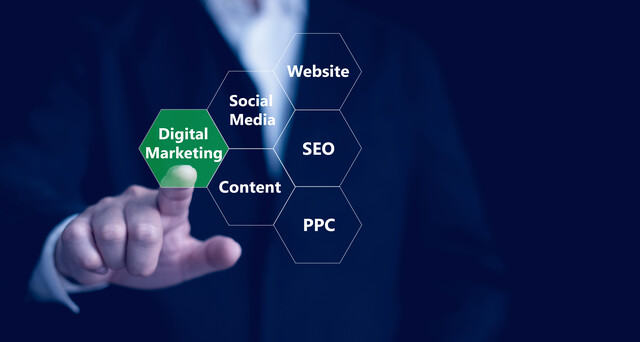One fundamental component in today's business environment is information technology (IT). This important feature of business management can include both computerized data systems and communication functions. Order entry, information storage and retrieval, interdepartmental connectivity, and customer relationship features are the key requirements of this business function. Sharing data across separate disciplines is fundamental to success; so is automating time-consuming or repetitive activities. Managers must control and streamline the flow of information throughout an organization.
Today's businesses are multidimensional. Customer orders affect fulfillment, accounting, personnel, inventory, sales, and other operational functions. Supplier shipments require input from receiving functions, and management provides forecasts and planning models for other departments to follow. So how do today's businesses manage collecting and sharing information throughout the company? By creating and integrating a flow of information through technological means. The chief information officer (CIO) is usually responsible for the management of IT functions in larger companies, whereas small businesses typically hire independent firms to manage their computerized systems.
IT Fundamentals
A company's IT functions are built on a framework of connected devices, each running software applications that store data and transmit information. The devices can be connected through wire transmission or over wireless broadcast networks. With more mobile communications in use today, wireless transmission can improve employee connectivity. Within the framework is a network of connected terminals where data is input and programs display the shared information.
A network can be connected in one of two ways: peer-to-peer, which links two or more computers together directly to each other, or client/server, where computer terminals share information through a mainframe terminal that stores the data in a central location. A database stores information for retrieval, sorting, and report generation. Each department manager can monitor current and historical data and report activity to upper management. The database distributes information through actions called queries. A query is a request for information from the database. A central database provides a unified source for information, while modular software programs perform retrieval and sharing functions with unique queries. The key to effective operations is the integration of these programs, so that software from different vendors can be added easily and each company function can access the same information in real time. There are three primary types of networks that businesses use:
-
Local Area Network (LAN): Multiple terminals within a close distance, such as one building, are connected through a server. One entity owns, manages, and controls the data. Information sharing is limited to LAN.
-
Wide Area Network (WAN): This term refers to unlimited terminals connected over a wide distance, for example, the Internet. The WAN connects multiple LANs. Data is owned, managed, and controlled by multiple entities.
-
Wireless Local Area Network (WLAN): Devices are connected through a wireless modem that distributes data to a LAN. The data is typically owned, managed, and controlled by one entity; however, because of its wireless design, information can be retrieved by parties outside the LAN.
Enterprise Resource Planning
IT managers are responsible for their company's ability to plan and execute its mission. Through technologies, data can be sorted, categorized, and grouped in ways to reflect historical and projected output. Today, larger, multidepartmental organizations rely on IT in order to develop enterprise resource planning (ERP). This multifaceted approach to information distribution began in the early 1960s as material requirements planning (MRP) by manufacturers seeking to coordinate planning, production, and delivery data. Computer software developers created databases and software modules, or single-function programs that mapped out flows of input used for purposes ranging from forecasting models to scheduling material orders to shipment of final products.
Customer Relations Management
One of the advantages of successful IT integrations is creating customer satisfaction. The primary focus of the CRM discipline is to create a two-way channel for communicating with prospects and customers, both internal and external.
-
Internal customers are those who receive data, goods, or services from within the organization. Goods typically flow from a purchasing agent to other departments, but data and services can flow from any department to other areas, such as customer service to accounting, and back.
-
External customers are those who interact with the company. They can be customers buying the company's output, vendors who supply the company, or partners who share in the company's fortunes.
Sales Force and Marketing Management
Sales force automation (SFA) is a system that records and reports sales activities. Many times, it is combined with marketing information systems (MIS) to guide the enterprise's customer relationship efforts. The SFA records and reports opportunities in various sales cycle stages. A contact management system (CMS) is used to record contacts made, the outcome of the contact, and the follow-up strategy for specific prospects and customers. Sales agents can track leads, target opportunities, and forecast sales volume through SFA. In some instances, customers can modify requests from a remote location and place an order immediately. For example, a car buyer can choose colors, features, and engine size through on online car dealer. The SFA program prevents duplicate contacts with a customer for the same purpose from different departments.
Vendor Management Systems
When a business needs additional temporary help to meet demands, the vendor management system (VMS) provides a platform to manage the process of contacting, ordering, and payment of a contingent workforce. Human resource personnel use the system to plan recruitment strategies, provide a screening mechanism, customize staff requirements and monitor temporary staffing effectiveness. The system is typically a Web-based application that allows a user to enter candidate criteria, job requirements, pay scale, duration, and other variables.
Inventory Control Systems
Warehouse operations typically use an inventory control system, made up of both hardware and software, to monitor the quantity, status, and location of inventory. Shipping, receiving, and storing processes are managed by data input at various stages of product handling. The system usually uses bar codes, such as a stock keeping unit (SKU) or a radio frequency identification (RFID) tag to indicate location. The system reduces overstock, under-stock, or out-of-stock situations, as management can instantly analyze counts and storage conditions.
Accounting Information Systems
By recording financial data into an accounting information system (AIS), managers can instantly analyze expenses, purchases, payroll, revenues, investments, and other information critical to the enterprise. General ledger and journal entries are immediately "marked to the account" and can be reported in real time to senior management. Software modules make the ledger a hub that connects areas like accounts payable, accounts receivable, and fixed assets. Data is input in these accounts, then flows automatically to the general ledger. Reports can be created for each account or the entire ledger.
Human Resource Management
The administrative functions of the human resources department can be streamlined through a human resource management (HRM) program. This system can track employee records and store employee data, such as employment history, skills, accomplishments, and salary. The company's human "capital" can be reviewed, forecast, and measured through the HRM system. The process follows five key areas:
1. Payroll: The payroll module automates processes by gathering employee attendance and pay scale, making deductions for taxes and other subtractions, and producing checks for distribution. Data comes from timekeeping mechanisms and HR department input. The system also automates direct deposit and benefit payments.
2. Work time: Through data on work-related efforts, management analyzes efficiencies, cost benefits, and long- and short-term capital needs.
3. Benefits administration: The system maintains information about insurance, time off, profit-sharing, compensation, and retirement benefits. Employee records are immediately updated to reflect current status.
4. Human Resources Information System (HRIS): The entire employee file is maintained from application for employment to retirement. The system records demographics, training received, contact information, insurance beneficiary designations, and other personal information. HR can use this data to plan placement, compensation, and professional development activities.
5. Recruiting: Most programs compile data important in recruitment efforts. Advertisement activities, interview process development, background review procedures, and other hiring responsibilities are managed using the HRM system.





























